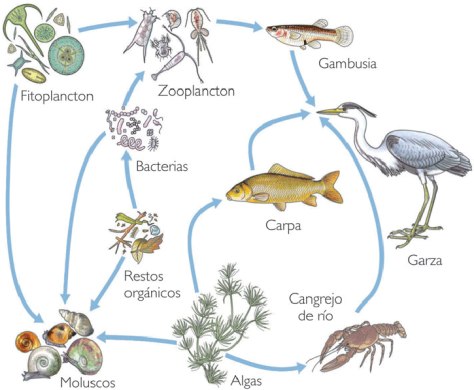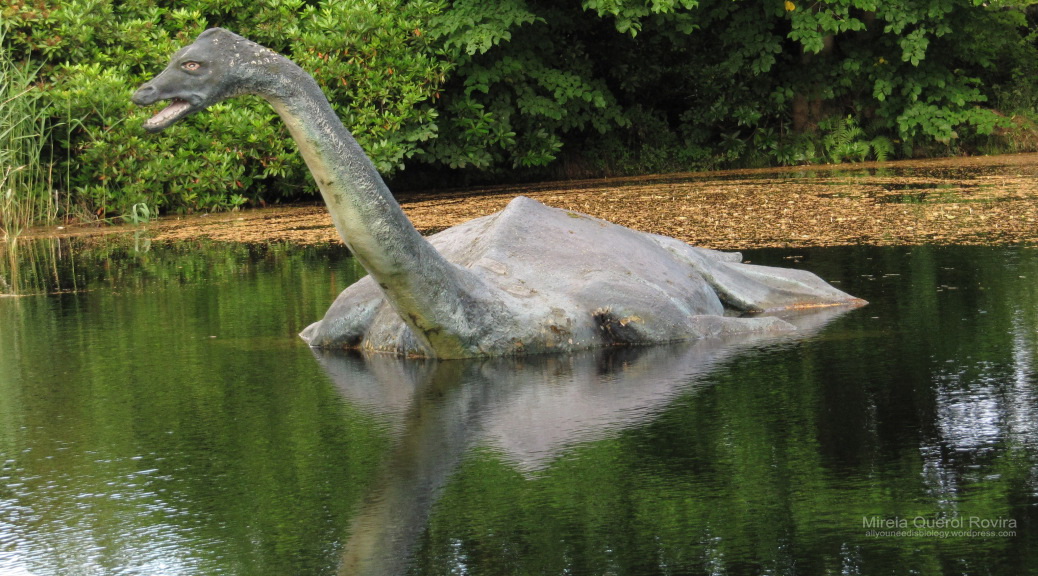The Loch Ness Monster, Yeti, Chupacabras, Bigfoot, Kraken… we’ve all heard about them once and we even doubted their (in)existence. What is the truth about these creatures? Are they real? If not, what answers gives science to refute it? Find out in this article.
CRYPTOZOOLOGY
Cryptozoology is a pseudoscience, uses scientific terms but is based on beliefs rather than evidence and does not use the scientific method. It tries to find animals that have not been confirmed by science, called cryptids. Usually are beings appeared in myths and legends, but also extinct species that it ensures they have been seen at present, as the thylacine or dinosaurs (non-avian ones). You just have to do a search in internet to find fake photos that won’t mislead the most gullible person, but when the stories are installed in the collective memory, supporters of cryptozoology increase.

Cryptozoology usually tries to add features of real animals to cryptids to make them more credible, and even appropriates of the species discovered by biology (zoology), like when they say the Kraken is actually a giant squid.
THE LOCH NESS MONSTER
Nessie it is the most famous cryptid, a gigantic aquatic animal which is supposed to live in Loch Ness in Inverness, Scotland. As with all cryptozoological beings, evidence of their existence are fuzzy pictures and testimonies of sightings. Surely you’ve ever seen the most famous photo of the Monster:

This one, like all photos of the monster, have been proved to have been farces and frauds. However, they continue to fuel the myth: the annual profit in this part of Scotland are of several million euros. It is not surprising that many lakes around the world have their own monster like Nahuelito, Caddy, Champ, Manipogo, Ponik …
WHY THE LOCH NESS MONSTER CAN’T EXIST ?
- Its age: the first reference of a being in this lake dates back to 565. So today it would be… 1451 years old, much more than the oldest known animal: Ming the clam (507 years old). Or even more, as some cryptozoologists argue that it could be a plesiosaur or a similar animal (extinct over 65 million years ago) about 20 meters long and 10-20 tons.

Or maybe it was just an otter… Photo: Jonathan Wills - Origins: if it was an animal from the Age of Dinosaurs, or their descendants, it is impossible to have always lived in the lake, which was frozen since the last Ice Age until about 12,000 years ago. There are no ways of connection within the lake and the sea, there are no sightings of the montser outside the lake, so ti could never go out to the sea to feed, for example. Assuming also Nessie was an aquatic reptile, his preference would be subtropical waters, not the cold waters of Inverness (6 ° C on average).
- Family of Nessies: the only possible explanation for the continued existence for thousands or millions of years, is that there are no one, but at least 100 individuals like Nessie to keep a viable population, according to population ecology. The minimum viable population is the smallest isolated population having 99% chance to stay alive for 1000 years (Shaffer, 1981). In addition, the Loch Ness is 56.4 km long and 226 m deep, there is an obvious lack of space for all of them (in addition to that sightings would constant).
- Lack of corpses: in the case that there was a group of plesiosaurs, sooner or later their bodies should appear in the bank and no one single corpse has been found.

Elephant swimming. In 1933, the year with more sighntinghs, a circus toured the area. Its elephant apparently bathed in the lake several times. Photo: Jeremy Tucker - Insufficient food: the lake is deep, long and narrow (32 km x 1.6 km). As the base of the food chain on Earth are plants, in aquatic areas are phytoplankton, algae and plants that can sustain herbivores and carnivores. Loch Ness has a little surface area exposed to the sun, so do not get enough sunlight to do a massive photosynthesis. In addition, the water is dark because has turf in suspension, preventing the existence of light from a few meters depth. It is so unproductive that it could not survive a predator of more than 300 kilos. Obviously, there are few animals that are totally insufficient for feeding one or more animals of 20 tonnes.

Food chain of a freshwater environment. The arrows indicate the direction of energy from one link to another. Picture: unknown - Lack of evidence with the latest technologies: BBC has tracked the lake several times with sonar and satellite navigation technology with negative results. Neither mini-submarines or 24 hours webcams have found no sign of the monster.
THE YETI, THE ABOMINABLE SNOWMAN
The second most famous cryptid is a giant bipedal ape living in the Himalayas. Or in North America (Bigfoot), Canada (Sasquatch) Almasty (Russia), Hibagon (Japan), Yowy (Australia)… Like Nessie, Bigfoot moves millions of euros/dollars and each country has its own. Also is suggested that could be some kind of extinct hominid, a Neanderthal, a Homo erectus or a Gigantopithecus .

Photograph which revived the legend of the Yeti (1951). Photo: Eric Shipton As with all cryptids, evidences are based on eyewitness sightings, blurry photos or with doubtful origin. But in this case there are hair samples ensuring that belong to the Yeti. What science says ?
DNA ANALYSIS
The current understanding of genetics has allowed us to establish a more precise family relationships and identify living beings through analysis of DNA. So Bryan Sykes (Oxford University) led a study that analyzed more than 30 hair samples preserved in Buddhist temples, museums and private collections. Result: horsehair, bison, human, raccoon, cow, wolf, coyote… but none of the Yeti .
The good news for zoology is that two hair samples match the DNA of a polar bear fossil, which could belong to a bear species unknown until now or a variety of polar bear of another color (golden-brown).

The most famous photo of Bigfoot is a snapshot of a video taken by Patterson-Gimlin THE CHUPACABRAS
The Chupacabras (“goat-sucker”) is supposed to be a creature that kills and sucks the blood of farm animals without spilling a drop. Definitions are multifarious, bright red eyes, scales, bipedal, spikes on the back… also alleged dead Chupacabras are reported:

The alleged chupacabras carcasses are usually canines with scabies who have lost hair, raccoons, or in this case a flying fox. Photo: unknown The Chupacabras has the distinction of operating in latin countries: Venezuela, Puerto Rico, Mexico, Argentina, Spain, Chile… The alleged habitat of chupacabras clashes with biogeography: a branch of science that studies the distribution of living beings on our planet .
Knowing a basics of biological evolution and climate we can think like biogeographers: species are distributed according to their habitat and have adapted to the different areas and climates. No one would think of a frog living in the Sahara desert, for example. But Chupacabras seems to not care: inhabits a huge variety of landscapes between two continents and several islands, but of course, has a predilection for Spanish-speaking places. Nothing to do with biology: it is the product of a legend of oral tradition.
ZOOLOGY VS CRYPTOZOOLOGY
In conclusion, zoology is the branch of biology that to certify that it has discovered a new species must:
- Submit an holotype (a copy of the animal) to the scientific community ( natural history museums, university…) available to anyone concerned.
- The holotype has to pass a DNA test .
- The discovery must be published in a scientific journal with arbitration or peer review (method to validate the results of the investigation)
- After validation, the species is classified following the rules of the taxonomy and systematics.
We don’t need to invent strange creatures and discredit biology: nature is surprising enough to marvel us at new tangible species zoology keeps discovering and describing. Amazing animals like tardigrades, pyrosomida, the giant squid and deep-sea species, platypus and poisonous rats… and many others remaining to be discovered.
REFERENCES
- Chordá, Carlos, 2007. El yeti y otros bichos ¡vaya timo! Ed. Laetoli
- Monstruo del Lago Ness: ¿Qué hay de verdad tras el mito?
- Photos of the Loch Ness Monster, revisited
- Is Loch Ness monster dead?
- El monstruo del lago Ness en Magonia
- El Yeti, ¿Una leyenda tirada por los pelos?
- Cover picture: Loch Ness Monster figure in Scotland. Photo by Mireia Querol Rovira

- Submit an holotype (a copy of the animal) to the scientific community ( natural history museums, university…) available to anyone concerned.

